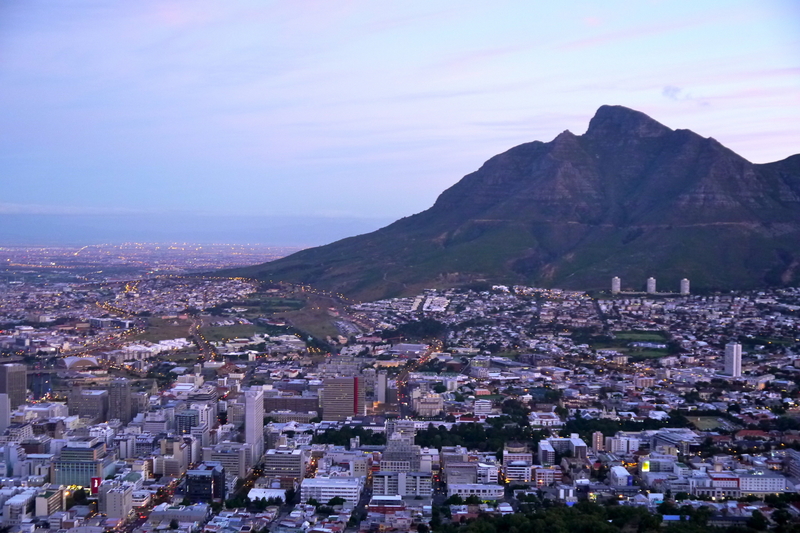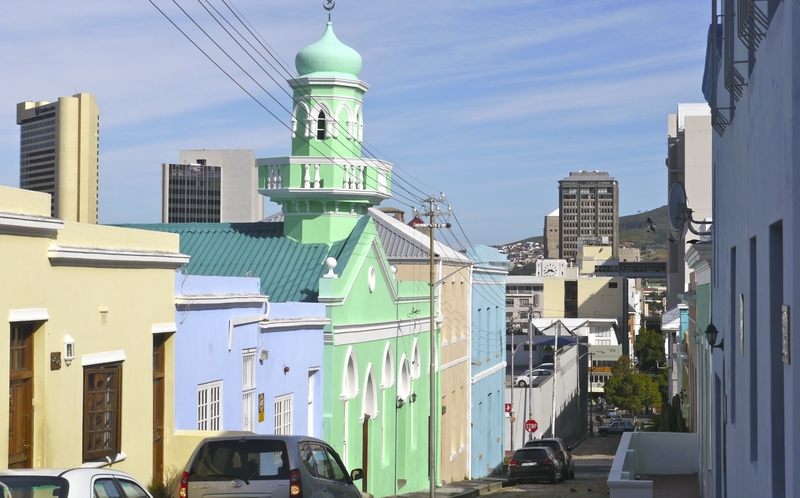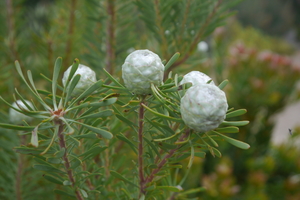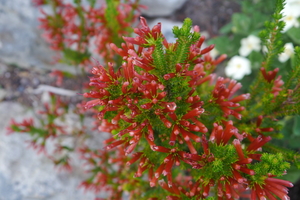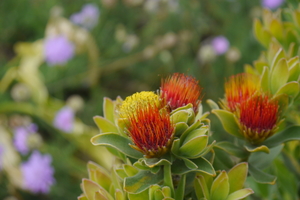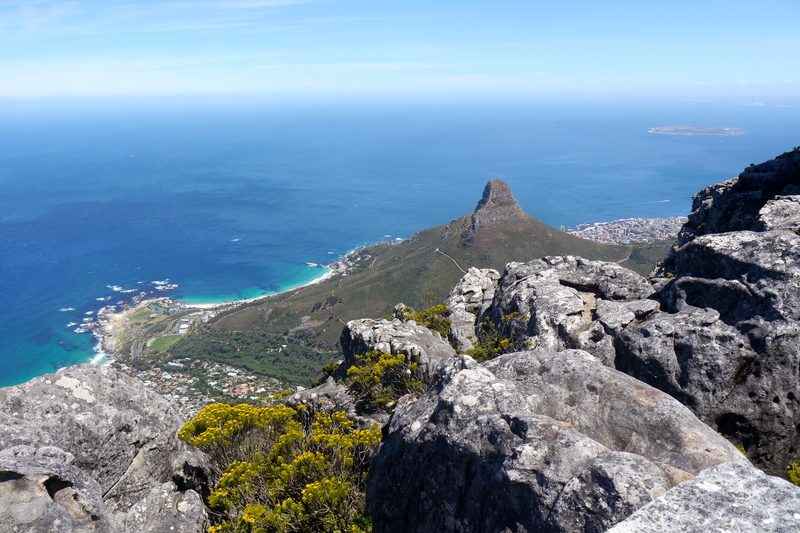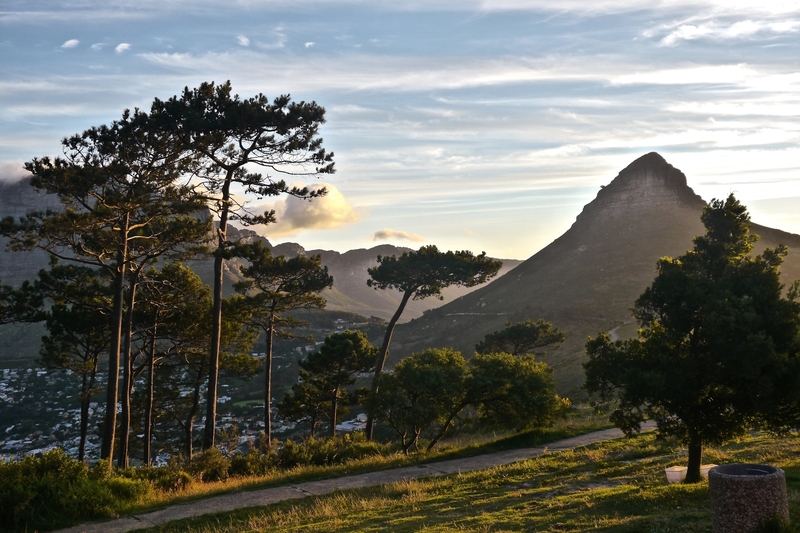
Cape Town in Three Days: A Land of Contrasts
After a year of living in rural Namibia, Cape Town hit me with a large dose of culture shock. The city seemed, on the surface, to be everything my dusty, northern corner of Namibia was not—cosmopolitan, diverse and teeming with things to do.
My friends and I fell in love with Cape Town immediately. The food was tantalizing, the air was crisp, the mountains were stunning. It was difficult to believe that just a few days prior, my friends and I had been navigating the dusty streets of Ovamboland, and that we now stood in one of the world’s great cities, at the foot of Table Mountain, soaking in the balmy weather, the abundant greenery and the crashing waves.
It is no wonder Cape Town is considered one of the greatest cities on Earth, I remember thinking.
Three Days in Cape Town
There are a million and one things to do in Cape Town. Unfortunately for my friends and I, we were not be able to do them all. Our limited three days in Cape Town meant that we had to pick and choose what we wanted to see and do. After all, Cape Town is largely considered to be the number one place to visit in South Africa. To do the city justice would take weeks, if not months.
Over the course of our three days in the Mother City, we found ourselves continually crossing items off our list—not because we had completed them, but simply because we had no time to fit them into our packed itinerary.
Nonetheless, thanks to the effortless transportation provided by Cape Town’s Hop on Hop off Bus Tours, we were able to pack in a whirlwind visit to some of the city’s most remarkable neighborhoods and beaches.
-
The Hop on Hop Off Bus
I’m not usually a proponent of Hop on Hop Off tours. In general, I find that I can navigate cities easily using a mixture of walking and public transportation. But not in Cape Town. Cape Town is one of two places in which I was truly grateful for the ease at which the tours allowed me to navigate the city (the other place being Shanghai). In Cape Town, the tourist bus is so convenient, that my friends and I were even able to access some of the city’s most far-flung attractions.
The Hop on Hop Off Bus in Cape Town consists of four routes: the Red Line, the Blue Line, the Yellow Line and the Purple Line.
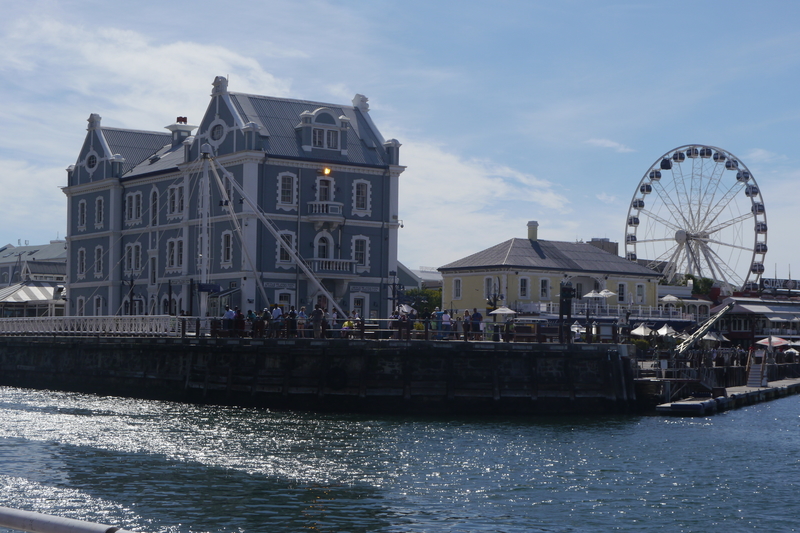
The Red Line highlights the essential places that one might visit if they only had a day to explore Cape Town. It goes through the V&A waterfront, past Table Mountain, over Kloof Nek and back up the Atlantic Seaboard past Camps Bay and Clifton Beach.
The Blue Line includes farther destinations, such as the Kirstenbosch Gardens, the Imizamu Yethu Township and Hout Bay.
With the yellow and purple lines, travelers have the opportunity to navigate downtown (yellow) or peek into wine country (purple).
Using a combination of the blue and red lines, we enjoyed a whirlwind visit to South Africa’s splendid coastal city.
Day 1: Delving into Cape Town’s History
On our first day in Cape Town, my friends and I took the opportunity to explore the city’s downtown and visit some of its most eccentric neighborhoods. It was a whirlwind day that gave us an overview of the city’s historical core, while forcing us to think about the forces at play in this diverse and complex part of Africa.
-
V&A Waterfront
During our first day, we walked the streets of the V&A Waterfront and gaped at the extravagant malls and boutique shops. Situated on South Africa’s oldest working harbor, the lovely waterfront contains a mixture of residential and commercial buildings.
The waterfront is one of the main places to visit in Cape Town. It is the city’s tourist showpiece—a place where locals and tourists come to eat, shop, and soak in views of Table Mountain.
-
Tour of Robben Island
The V&A Waterfront is also the launching point for tours of Robben Island—a UNESCO-recognized prison that once housed the likes of Nelson Mandela, Kgalema Motlanthe and Jacob Zuma.
Our visit to South Africa coincided with a period of tragedy throughout the country. Just a few days prior, the world had received news of the death of a man who was the face of South Africa’s transformation. Nelson Mandela, the country’s nonviolent leader and political activist, passed away at the age of 95 and left a country in mourning.
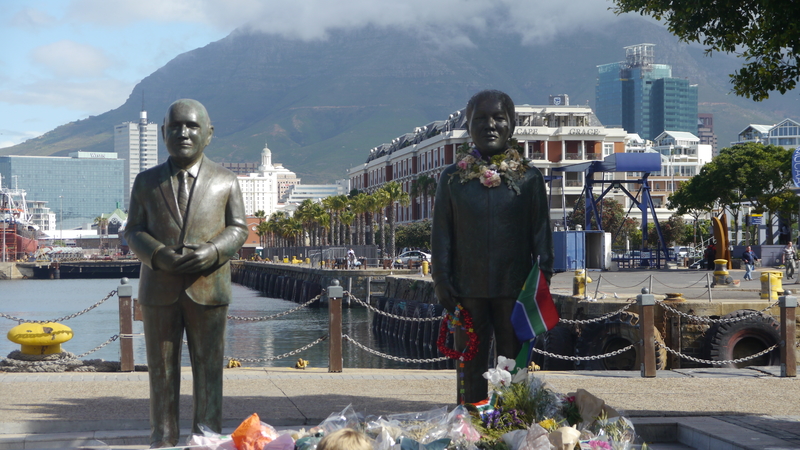
To reach Robben Island, we took a ferry from the waterfront. Onboard the boat, we admired sweeping views of Cape Town and the surrounding mountains from afar.
The Robben Island prison was founded in the 17th century as an internment place for political prisoners from the Dutch colonies. Later, the island became a leper colony until, in 1961 it was used as a place where political prisoners and opponents of the apartheid regime would be brought to carry out their life sentences.
The comprehensive tour of Robben Island took a better part of the day, but it was a worthwhile and necessary excursion that gave us a greater perspective of life under Apartheid.
Upon reaching land, the passengers from our boat were shuffled onto a bus and taken around the island for a briefing on the sights and significance of Robben Island.
I was amazed by the scope of the island. Though today it is largely a ghost town, Robben Island once contained a functioning school, a permanent population and many of the conveniences of an ordinary town. The bus ride around the island gave us a foundation of the island’s history as well as magnificent views of Table Mountain from across the bay.
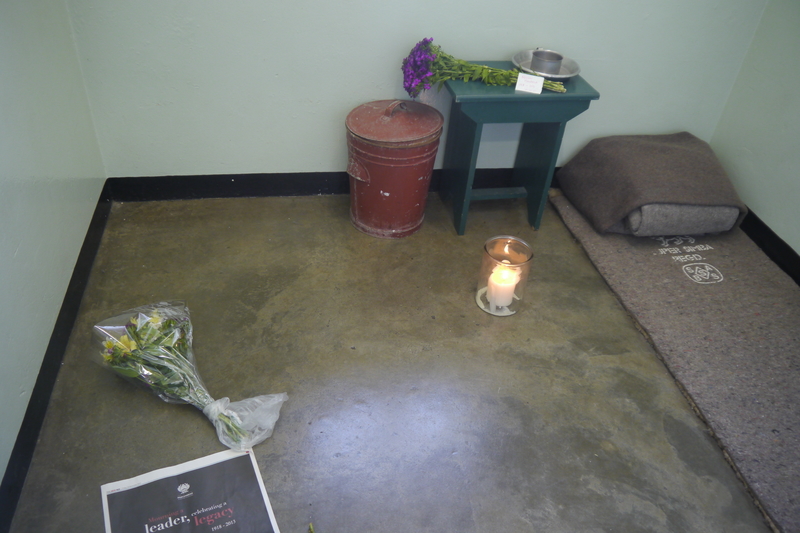
The second part of our tour consisted of visiting the high-security prison itself. We were met by a charismatic guide and former political prisoner who took us around and provided us with a human perspective of life inside the prison walls.
My friends and I spent time meandering the empty hallways, reading poems and personal accounts that had been framed on the walls of individual cells and listening to our guide’s accounts of the daily life he experienced as an inmate. At the conclusion of our tour, we were brought to Nelson Mandela’s prison cell. In light of his recent death, his cell was adorned with candles, flowers and newspaper clippings.
-
Bo Kaap Neighborhood
After our tour of Robben Island, we headed to the historic Bo Kaap Neighborhood. The Bo Kaap is a vibrant Malay neighborhood that sits at the foot of Signal Hill. The surrounding mountain peaks create a backdrop to the beautiful rows of multi-colored houses.
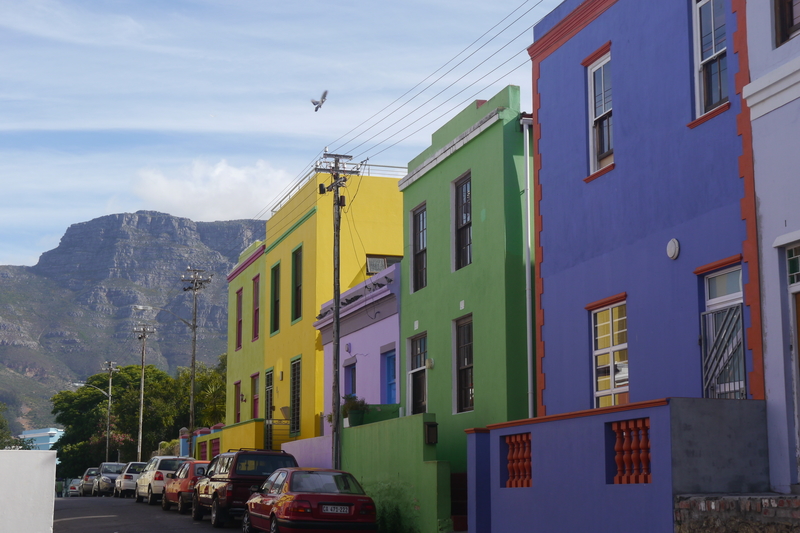
The Cape Malay community has its roots in South East Asia. Many of the residents are descendants of enslaved Indonesians and Malaysians brought to the Cape by the Dutch East India Company in the 1600s. The population is predominantly Muslim, which is reflected in the many minarets scattered throughout the neighborhood. Today, about 165,000 Cape Malayans inhabit Cape Town and most of them live in the colorful neighborhood of Bo Kaap.
This historically significant community adds a vibrant piece to Cape Town’s colorful patchwork of cultures.
Day 2: The Blue Bus Line through Contrasting Cape Town
Cape Town presents a facade of glitz and glamor, but digging deeper reveals a city full of contradictions in an area of the world that still feels the deep scars of Apartheid.
It would certainly be easy to get a one-sided impression of Cape Town. It would be easy to overlook the four million Capetonians who live in squalid conditions, in shantytowns that stretch as far as the eyes can see, merely a stone’s throw away from the multi-million dollar mansions that overlook the Atlantic Ocean.
Our journey along the Blue Line brought us face to face with Cape Town’s contrasting realities and made us aware of the country’s stark race-and-class-based inequalities.
We took the city sightseeing buses around Cape Town, beginning along the ritzy beachfront areas of town, and continuing with a tour of one of the city’s townships. In the late afternoon, we hopped back on the bus and ventured to the Kirstenbosch Gardens, where we would enjoy a Christmas concert among the beautiful flora at the foot of Table Mountain.
-
Cape town’s Beaches
We began our day with visits to the Cape Town’s luxurious ocean-side neighborhoods. The coastline that extends past Clifton Beach, Camps Bay and Hout Bay houses some of South Africa’s most opulent real estate. And with its windswept white sand beaches that lie in the shadow of towering mountains, it is no wonder why.
As we left downtown and headed toward the beach, the houses seemed to get more and more extravagant. Sea Point blends into ritzier Bantry Bay and Fresnaye, before culminating in the prime real estate of Clifton and Camps Bay, where white modernist villas climb the slopes above windswept beaches.
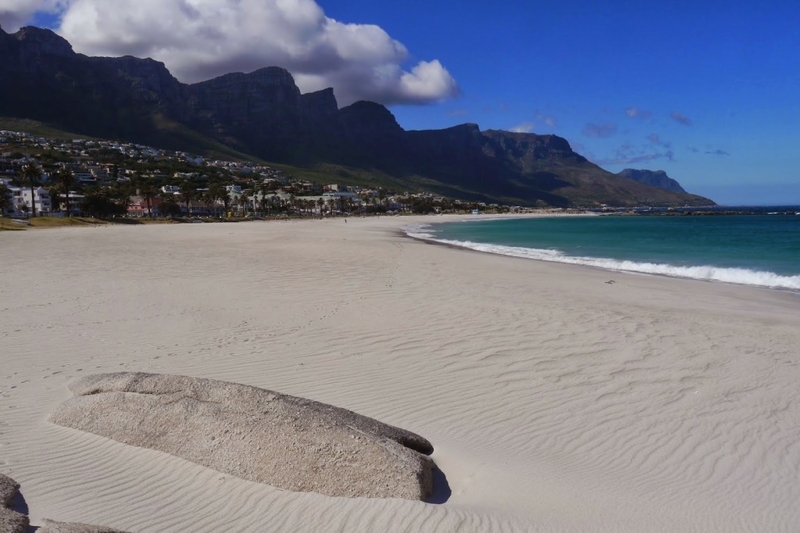
We got off the bus at Camps Bay. With soft white sand and a backdrop of the spectacular Twelve Apostles, the beach at Camp’s Bay is one of the city’s most popular.
From Camps Bay, the bus route continues to Hout Bay. We didn’t stop in Hout Bay, however. Since we planned on exploring the area by car while visiting the Cape of Good Hope, we chose to cut inward and visit the Imizamo Yetho Township instead.
-
Imizamo Yetho Township Tour
My friends and I were beginning to feel that we were getting a skewed impression of Cape Town, so we decided to visit the antithesis to the city’s chic coastline.
Imizamo Yetho Township sits at the foot of the mountains, just a stone’s thrown from the upscale beach community of Hout Bay.
Visiting the township was a reality check for my friends and me. We had been accustomed to living amongst poverty throughout our year volunteering. We had visited townships in Namibia and knew of the realities. But there was something about Imizamo Yethu that hit me as though I were witnessing this level of poverty for the first time. Perhaps it is because of the contrast between the township and other areas of the city just a few miles away. Perhaps it is because the sheer number of inhabitants and the fact that houses are practically piled on top of each other.
It all reminded me so much of Hebron in Israel and of the stark differences between haves and have-nots in the Occupied Territories.
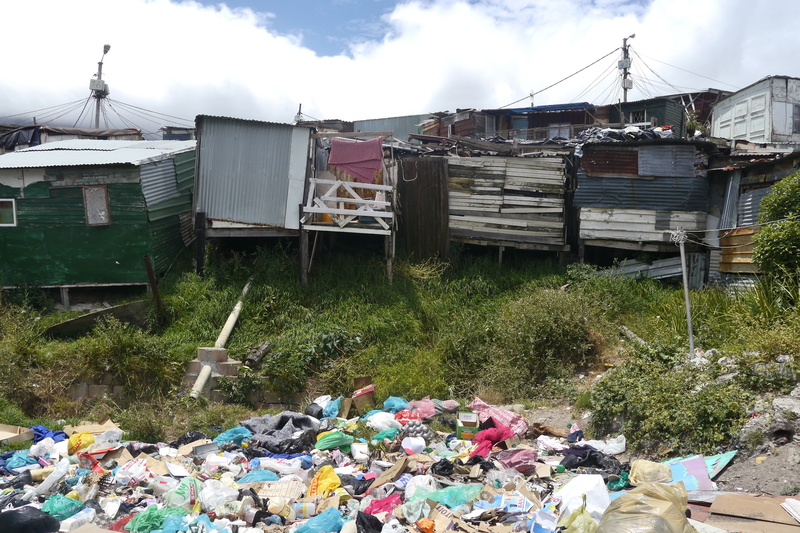
During the remainder of our stay in Cape Town’s ritzier areas, our experience in the township kept our perspectives in check.
-
Kirstenbosch Gardens
My friends and I finished our second day in Cape Town with a visit to the sprawling Kirstenbosch Gardens. The Kirstenbosch gardens are among the most magnificent worldwide. They showcase indigenous flora from five of South Africa’s biomes and are a wonderful place for a casual stroll or for an afternoon picnic at the foot of Table Mountain.
While standing at the base of a mountain, among the artistic arrangements of colorful plants, one would never know that they were smack in the middle of one of the world’s most cosmopolitan cities—much like a visitor to Hout Bay could be completely unaware of the Imizamo Yethu township just a few paces away.
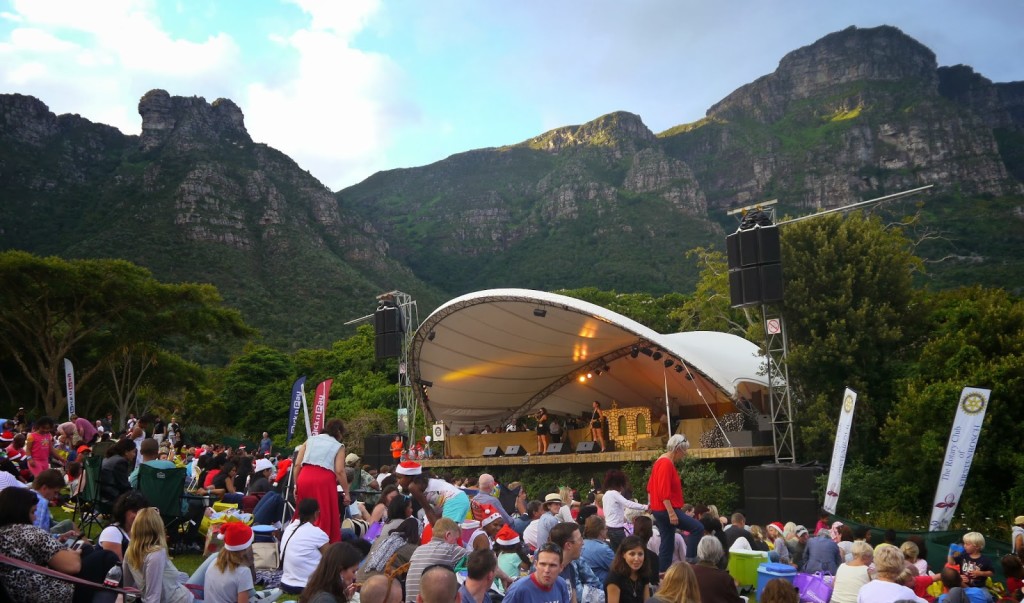
With two solid days of sightseeing behind us and only one full day left to explore, we hesitantly scratched items off of our list and focused on maximizing the time we had left, prioritizing what we deemed to be most important.
Day 3: Exploring Cape Town’s Nature with the Red Bus Line
Cape Town is unique in that it is both an urban retreat and an outdoor escape. Defined by its beaches and mountains, it is a city blessed with a one-of-a-kind setting.
Unlike the lingering polarity between race and socioeconomic status in Cape Town, the opposing forces of nature and industry have found a way to integrate beautifully into the landscape of the city.
-
Table Mountain
No visit to Cape Town would be quite complete without a climb to the top of Table Mountain, so we decided to spend the beginning of our third day in the city with a stunning and arduous trek up to the summit.
Though I like to consider myself an experienced hiker, the truth is that my year of living in Onantsi whipped me out of shape faster than I would ever like to admit. Climbing the mountain proved to be a strenuous ordeal. I wanted to attribute this difficulty to the weather conditions, my unaccommodating footwear or something else out of my control, but could not. I was simply out of shape and keeping up with my friends proved to be a challenge.
Nonetheless, in order to keep up with my friends, I made it up the hill rather quickly. In fact, the hike only took us about half of the suggested time.
Now, looking back, I wish I’d taken a few more moments to soak in the fantastic views.
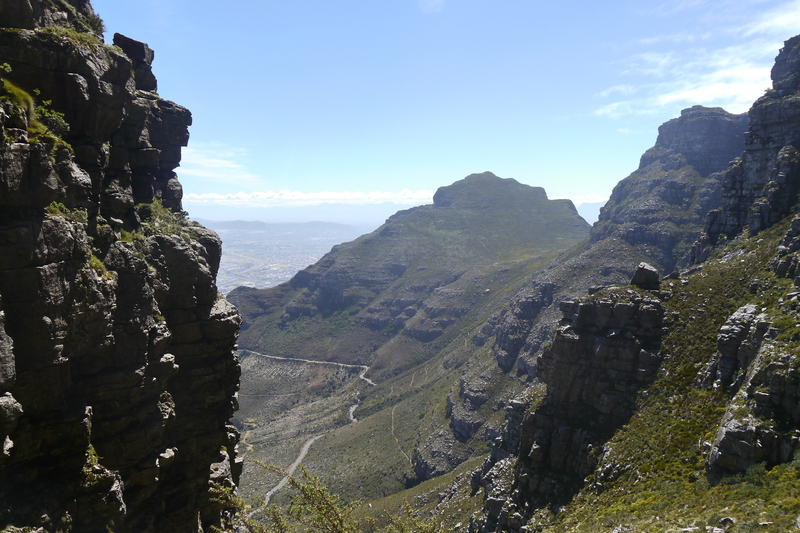
On the day we climbed Table Mountain, the wind was so fierce that I could feel it lashing against my face, tousling my hair and drying out my eyes. At one point, it even blew my sunglasses right off my face, resulting in one cracked lens and another that flew straight through the air and disappeared halfway down the mountainside.
The wind we experienced on our vertical climb, however, was nothing compared to the gusty blows upon the table top. At first, we tried to fight through the cold and took some time to appreciate the stunning views of the beaches, coastline and Cape Peninsula. From the top, we could see many of Cape Town’s neighborhoods and beaches. We admired the craggy, green mountains around us, the jagged coastline and the azure waters.
Standing at the top of Table Mountain, I felt far removed from the hustle and bustle of the city. The dramatic scenery reminded made me of an urban version of Lesotho-by-the Sea. I imagined how nice it would have been to spend an afternoon with a picnic lunch atop the mountain, soaking in the views and watching the thin layer of clouds cascade down the mountainside and into the City Bowl.
Despite the beautiful view, however, it was only about half an hour before the biting cold got the better of us and had us running back down the mountain in a hurry.
-
Signal Hill
Though it is certainly Cape Town’s most famous viewpoint, Table Mountain is not the only place from which one can relish spectacular views of the city and surrounding coastline. Signal Hill and Lion’s Head are additional natural landmarks that lie within the Table Mountain National Park.
On our last evening in Cape Town, we elected to take the Red Line to the top of Signal Hill for sunset.
Signal Hill may not afford the same dramatic views of the peninsula that we were able to see from the top of Table Mountain, but the aerial views of the city are spectacular.
Though we spent a few hours that evening experiencing the pulsing nightlife of Long Street, I feel that my adventure with my fellow volunteers effectively ended here, at the top of Signal Hill, while the sun was setting over the Atlantic Ocean and drenching the surrounding mountains in golden hues.
***
South Africa is a land of contrasts, and Cape Town is a microcosm of the dynamics at play in this varied country. It is at once a city of prominent architecture and magnificent nature—a place where a fusion of architectural styles from different epochs collides with mountains, beaches and forests. It is Western yet African, historical yet modern. It is a city where rich and poor live side by side, yet isolated in their own realities. A city with racial divides between black and white are still quite evident, despite progressive laws that have abolished segregation.
Yet, as the elements of society and nature have meshed to form a varied and dynamic city, I believe that, so too, will the polarities between races and classes fade over time. The toughest battles for equality and justice have already been fought and the elements for a harmonious future are there.
It is now up to the next generation of South Africans to see it happen.



